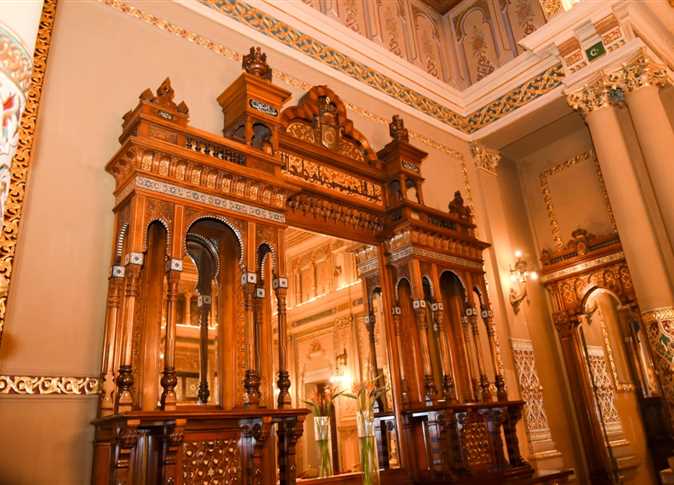تعبير عن قصر الحمراء بالانجليزي يوضح مدى براعة المسلمين قديمًا في إنشاء حصن منيع يوفر الحماية والأمان ضد هجمات الأعداء، ويكون مركزًا عريقًا للحاكم، ويعمل موقع زيادة على توضيح أجزاء من القصر مع ذكر مواصفات له، ليعلم الجميع مدى روعة البناء.
Introduction Expression of Al-Hamra Palace in English
The Alhambra Palace is one of the important monuments around the world, especially in Spain. It was built by Muslims. The palace illustrates the features of Islamic architecture at that time, and this is evident through the decorative elements used in the design.
elements of the subject:
1- Plan of the Alhambra and Generalife.
2-Three palaces.
3- The Comares Palace.
4-Palace of the Lions.
5-The Partal Palace.
اقرأ أيضًا: تعبير عن الانتقال إلى منزل جديد
Plan of the Alhambra and Generalife
Qal’at al-Hamra, or red fort, was built by the Nasrid Dynasty (1232–1492)—the last Muslims to rule in Spain. Muhammad ibn Yusuf ibn Nasr (known as Muhammad I) founded the Nasrid Dynasty and secured this region in 1237. He began construction of his court complex, the Alhambra, on Sabika hill the following year.
1,730 meters (1 mile) of walls and thirty towers of varying size enclose this city within a city. Access was restricted to four main gates. The Alhambra’s nearly 26 acres include structures with three distinct purposes, a residence for the ruler and close family, the citadel, Alcazaba—barracks for the elite guard who were responsible for the safety of the complex, and an area called medina (or city), near the Puerta del Vino (Wine Gate), where court officials lived and worked.
The different parts of the complex are connected by paths, gardens and gates but each part of the complex could be blocked in the event of a threat. The exquisitely detailed structures with their highly ornate interior spaces and patios contrast with the plain walls of the fortress exterior.
Three palaces
The Alhambra’s most celebrated structures are the three original royal palaces. These are the Comares Palace, the Palace of the Lions, and the Partal Palace, each of which was built during 14th century. A large fourth palace was later begun by the Christian ruler, Carlos V.
El Mexuar is an audience chamber near the Comares tower at the northern edge of the complex. It was built by Ismail I as a throne room, but became a reception and meeting hall when the palaces were expanded in the 1330s. The room has complex geometric tile dadoes (lower wall panels distinct from the area above) and carved stucco panels that give it a formality suitable for receiving dignitaries (above).
اقرأ أيضًا: موضوع تعبير عن القدس
The Comares Palace
Behind El Mexuar stands the formal and elaborate Comares façade set back from a courtyard and fountain. The façade is built on a raised three-stepped platform that might have served as a kind of outdoor stage for the ruler. The carved stucco façade was once painted in brilliant colors, though only traces remain.
A dark winding passage beyond the Comares façade leads to a covered patio surrounding a large courtyard with a pool, now known as the Court of the Myrtles. This was the focal point of the Comares Palace.
The Alhambra’s largest tower, the Comares Tower, contains the Salón de Comares (Hall of the Ambassadors), a throne room built by Yusuf I (1333–1354). This room exhibits the most diverse decorative and architectural arts contained in the Alhambra.
The double arched windows illuminate the room and provide breathtaking views. Additional light is provided by arched grille (lattice) windows set high in the walls. At eye level, the walls are lavishly decorated with tiles laid in intricate geometric patterns. The remaining surfaces are covered with intricately carved stucco motifs organized in bands and panels of curvilinear patterns and calligraphy.
Palace of the Lions
The Palacio de los Leones (Palace of the Lions) stands next to the Comares Palace but should be considered an independent building. The two structures were connected after Granada fell to the Christians.
Muhammad V built the Palace of the Lions’ most celebrated feature in the 14th century, a fountain with a complex hydraulic system consisting of a marble basin on the backs of twelve carved stone lions situated at the intersection of two water channels that form a cross in the rectilinear courtyard. An arched covered patio encircles the courtyard and displays fine stucco carvings held up by a series of slender columns. Two decorative pavilions protrude into the courtyard on an East–West axis (at the narrow sides of the courtyard), accentuating the royal spaces behind them.
Across the courtyard, to the East, is the Sala de los Reyes (Hall of the Kings), an elongated space divided into sections using a series of arches leading up to a vaulted muqarnas ceiling; the room has multiple alcoves, some with an unobstructed view of the courtyard, but with no known function.
This room contains paintings on the ceiling representing courtly life. The images were first painted on tanned sheepskins, in the tradition of miniature painting. They use brilliant colors and fine details and are attached to the ceiling rather than painted on it.
There are two other halls in the Palace of the Lions on the northern and southern ends; they are the Sala de las Dos Hermanas (the Hall of the Two Sisters) and the Hall of Abencerrajas (Hall of the Ambassadors). Both were residential apartments with rooms on the second floor. Each also have a large domed room sumptuously decorated with carved and painted stucco in muqarnas forms with elaborate and varying star motifs.
The Partal Palace
The Palacio del Partal (Partal Palace) was built in the early 14th century and is also known as del Pórtico (Portico Palace) because of the portico formed by a five-arched arcade at one end of a large pool. It is one of the oldest palace structures in the Alhambra complex.
اقرأ أيضًا: تعبير عن طموحاتك في المستقبل
Finale of the expression of Al-Hamra Palace in English
Through its two daughters, its picturesque designs, and its enormous size, the Alhambra Palace was able to illustrate the strength of Islamic civilization throughout the ages. The palace was created to be a fortress for military purposes, a small city, and a palace.
تعبير عن قصر الحمراء بالإنجليزي يذكر أهم المواصفات الخاصة بكل جزء في القصر، بالإضافة إلى توضيح الزخرفة الإسلامية المستخدمة في التصميم.

